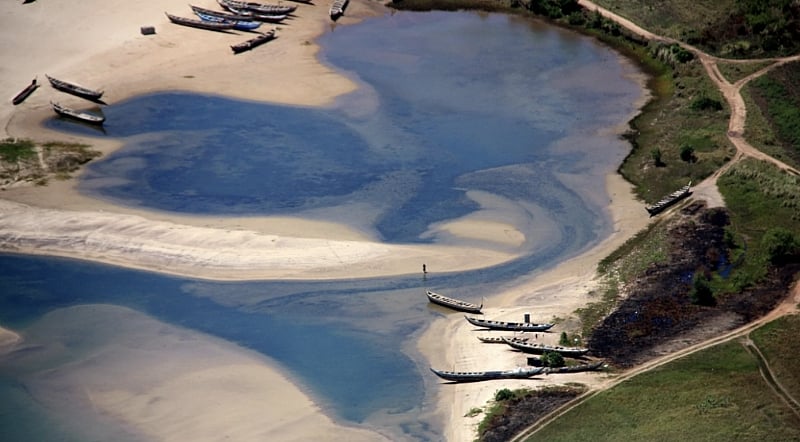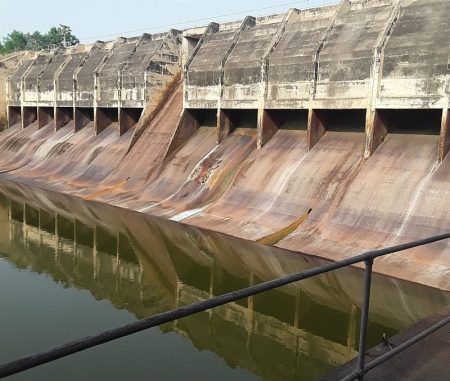The Keta Lagoon in southeastern Ghana, a vital resource for local communities reliant on fishing, faces a severe contamination crisis, according to a recent peer-reviewed study published in ‘Scientific Reports.’ Researchers discovered alarmingly high levels of arsenic and mercury in fish samples collected from the lagoon, posing significant health risks to the population, particularly children. The study examined twelve fish samples during the minor rainy season, revealing that a staggering 75% exceeded the World Health Organization’s (WHO) safety threshold for arsenic, while every single sample surpassed the allowable limit for mercury. This contamination poses a grave threat to the health and livelihoods of communities dependent on the lagoon for sustenance and income.
The Keta Lagoon’s enclosed nature makes it particularly susceptible to pollutant accumulation. Industrial and agricultural runoff, identified as likely contributors through correlation data, further exacerbates the issue. The researchers employed rigorous analytical methods, including Inductively Coupled Plasma Mass Spectrometry and atomic absorption spectrometry, to ensure the accuracy of their findings. Furthermore, the study’s statistical analysis revealed significant variations in contamination levels across different sampling sites within the lagoon, indicating multiple pollution sources. These findings necessitate immediate action to mitigate the health risks and implement sustainable environmental management practices for the lagoon.
The health risk assessment conducted as part of the study paints a concerning picture, particularly for children. Hazard index (HI) values for adults were significantly above safe levels at 14.5, while for children, the HI soared to a disturbing 44.1, emphasizing their heightened vulnerability to these toxins. Cancer risk assessments further confirmed the long-term dangers posed by arsenic, mercury, and chromium, excluding cadmium, specifically for children. Moreover, non-carcinogenic risks were also elevated, with target hazard quotient (THQ) values for children far exceeding acceptable limits. These results underscore the urgency of implementing comprehensive pollution control measures and educating communities about the risks.
Arsenic, a naturally occurring element found in soil, water, food, and air, poses significant health risks. Exposure to high levels of arsenic can lead to various health problems, including skin discoloration, lesions, skin cancer, bladder cancer, lung cancer, neurological problems, and cardiovascular diseases. Mercury, another highly toxic heavy metal, can cause severe neurological damage, especially in developing fetuses and young children. The combined presence of both arsenic and mercury in the fish from Keta Lagoon presents a compounded threat to the health of those who consume them, demanding immediate intervention.
The findings emphasize the critical need for comprehensive action from governmental bodies and relevant stakeholders. Environmental regulations must be strengthened and strictly enforced to control pollution sources. Public awareness campaigns are essential to educate communities about the risks associated with consuming contaminated fish, particularly for vulnerable groups like children and pregnant women. Furthermore, sustainable lagoon management practices must be implemented to prevent future contamination and protect the ecosystem. The study, despite its limited sample size and seasonal scope, serves as a stark warning of the imminent dangers posed by the pollution in Keta Lagoon.
Future research should expand upon this study by incorporating a larger dataset encompassing various seasons and locations to gain a more comprehensive understanding of the contamination’s extent and dynamics. Until then, caution is advised regarding the consumption of fish from Keta Lagoon, especially for children and pregnant women. The findings have understandably sparked fear and concern among local communities who rely on the lagoon for their livelihood and sustenance. Collaborative efforts between government agencies, researchers, and local communities are crucial to address the pollution, ensure the safety of the food supply, and protect the long-term health of the population and the Keta Lagoon ecosystem. Immediate action is paramount to avert a potential public health crisis and preserve this vital resource for future generations.














